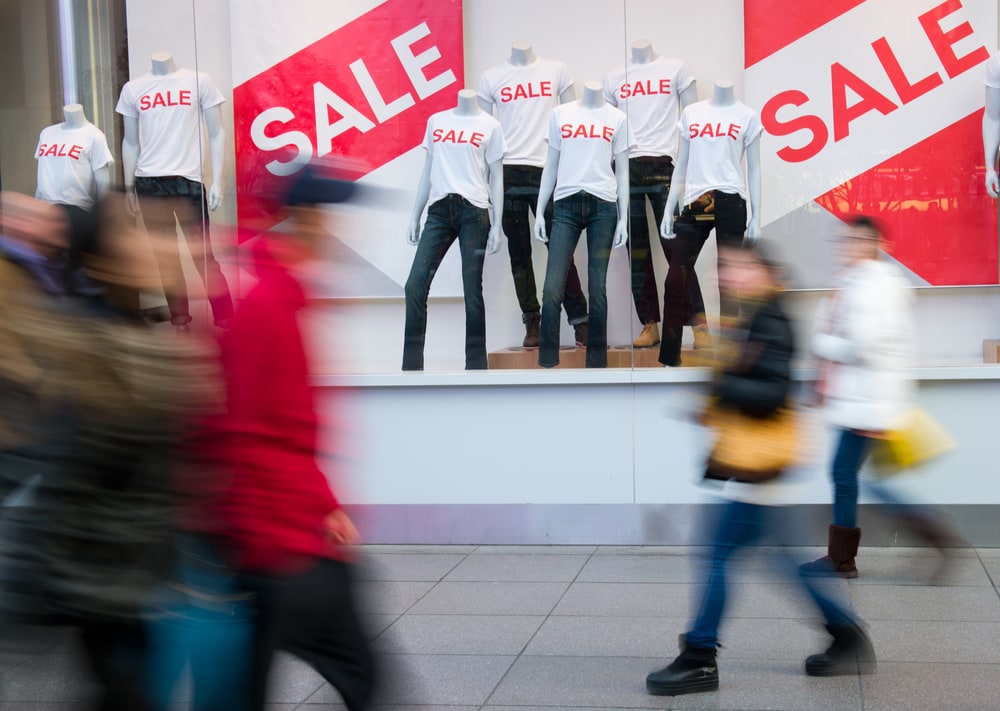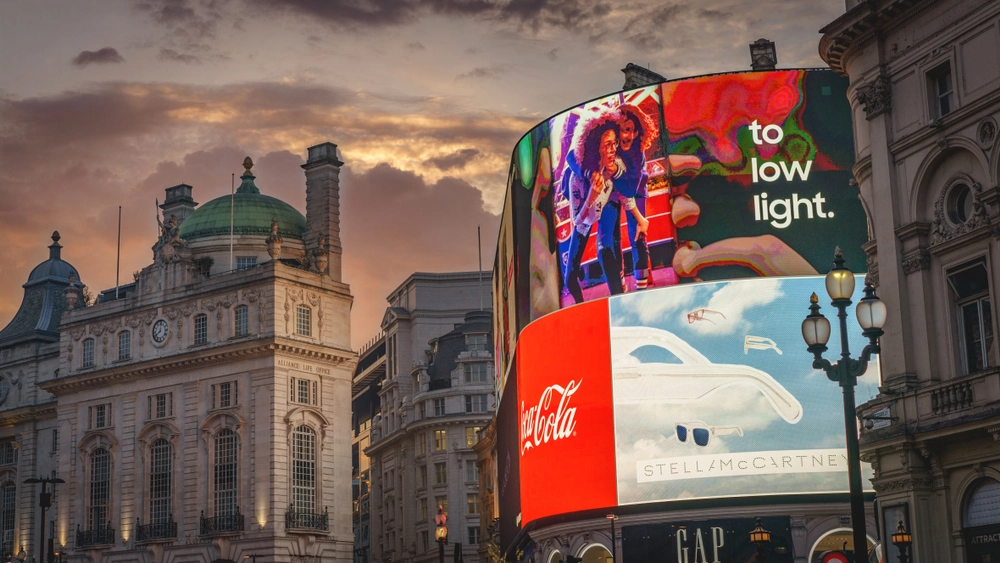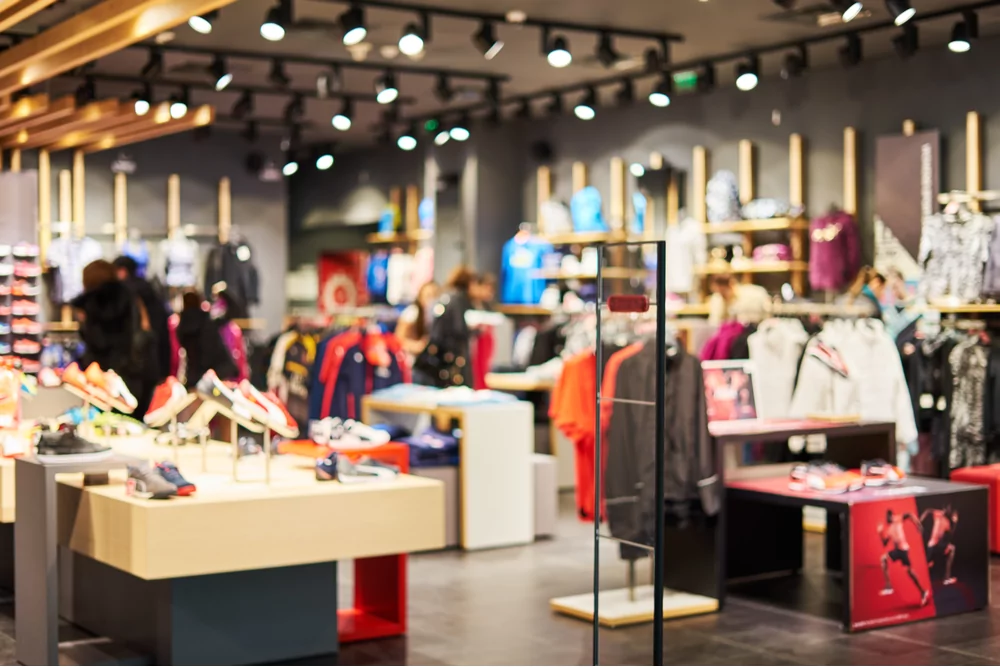
Retail Reduced – October 2024

By Nathan Peacey, Ella McCarthy, Brighton Dube, Elin Bebbington
7 Nov 2024 | 1 minute read
In this month's review of trends in the Retail and Consumer sector we look at the allure of the dark store and how this years fashion shows put more of an emphasis on sustainability.
Trends in the Retail Sector in October 2024
Christmas is fast approaching, and ‘Buy now, pay later’ (BNPL) lenders such as Klarna and Clearpay are there to help millions of people manage their budgets and cash flow over the festive period. However, with increasing bad press over the last couple of years, concerns continue to mount over the ease in which borrowers can rack up excessive levels of debt. The BNPL schemes now pervade online shopping, with massive retailers and brands including Tesco, Aldi, M&S, Boots and Deliveroo all partnering up with Klarna over recent years. Research conducted last year by the FCA found that 14 million people had used BNPL schemes and frequent users were more than 4 times as likely to have recently missed a payment for a bill or credit commitment than those who had not used the loans.
Given the FCA’s findings, the UK government have produced new rules and regulations to protect shoppers who use the BNPL schemes. BNPL lenders will be required to perform affordability checks on users by creating a safeguard to avoid unaffordable borrowing and protecting borrowers. The government have now confirmed that a consultation on the rules is due to end on 29 November 2024, with the new rules coming into effect in 2026. Shoppers will benefit from the protections in the Consumer Credit Act 1974 to make more informed and educated decisions regarding their purchasing.
Retailers may be wary of the upcoming regulations since sales will likely decrease in the short-term. However, long-term benefits will inevitably arise. Uncertainty in respect of overdue payments will be reduced, and the number of ‘serial returners’ will likely decrease. Stifel’s Finder survey found that 28% of respondents use the BNPL schemes to try on clothes before paying, indicating that the schemes are being used in replacement of in person clothing ‘try-ons’. Thus, tighter regulations will help to reduce high return rates; currently nearly £7billion of unwanted clothes are returned to retailers each year, which continues to have a heavy impact on profitability.
The new regulations have been welcomed by consumer champions although arguments that they should be implemented sooner are still reverberating. The founder of the MoneySavingExpert website Martin Lewis stated,
Labour MP Stella Creasy similarly expressed concerns and encouraged borrowers to be cautious going into the Christmas ‘spending period’,
The ‘tightening up’ of BNPL schemes may ensure that less goods are returned, and more goods are paid for in full (and with any luck in the requisite periods). In the long-term this may be beneficial for both consumers and retailers alike.
Fashion month may be over for another year, but with that comes a convenient time to review and scrutinise the fashion retail industry from a ‘sustainability’ perspective. ESG initiatives continue to dominate both businesses and customers’ attention but is this all ‘talk’ or can the big names in fashion actually ‘walk’ the sustainability ‘catwalk’ (excuse the pun)!
According to the UK Fashion and Sustainability Market Report 2024, 57% of Britons see sustainability as ‘important’ for fashion, which is different to last year when we witnessed a drop in interest in ‘sustainability’ as a result of ‘tighter household budgets’. This rise in prominence has been noted and reflected by a number of brands by the incorporation of more eco-friendly fabrications and practices into their collections. Retailers should take note of consumers ‘wants’ and ‘needs’, in the same way that the big names in fashion have….
A few examples of sustainability showstoppers over the spring/summer 2025 shows are illustrative:
- Diesel’s Denim Statement
Diesel’s catwalk featured 15 tonnes of denim scraps from their factories alone. This powerful catwalk highlighted the prominence of fashion waste, as models were obliged to strike their poses amid an ‘ocean of denim scraps’. Diesel promised that the denim scraps would be repurposed after the show, as an attempt to increase the percentage of the brands recycled cotton products (currently standing at 57%). Diesel’s creative directors commented that there is ‘beauty in waste’, although critics stress that this is only the case if this waste is restored in new and exciting ways, rather than being burned for power purposes (which according to the BBC is now the UK’s dirtiest form of power).
- 8ft Waste Clothing Zombie
The Or Foundation, an organisation from Ghana, showcased an 8ft zombie created from excess clothes. This initiative physically stressed the monumental problem of textile waste, as well as highlighting the non-profit’s partnership with Vestiaire Collective to sell recycled and repurposed garments from Ghanaian designers.
- Innovative materials and textiles
The catwalk showcased new and enticing fabrics that are intended to be used and re-styled for generations to come. Newcomer ‘Circ’ is a new recycled fibre made from polycotton waste and was a clear favourite for Christian Siriano. Other materials that made their debut catwalk experience included ‘OnceMore’ (a blend of viscose and recycled textile waste) and Seacell (a seaweed-based material).
- Stella McCartney and her fixation on birds
McCartney is renowned for her pro – animal rights stance and this year turned her focus away from leather and onto feathers. The charity ‘Four Paws International’ estimated 3.4 billion birds are killed annually for feather down, so McCartney chose to take inspiration from birds rather than ‘literally’ use them in her collection. Her striking bird shaped bra top and fluffy blue minidress made from recycled plastic bottles highlights the brand’s creativeness without the need for animal products.
The Fashion and Retail industry may be responsible for 10% of global carbon emissions, (as confirmed by the UN Climate Change Report) however Fashion Month suggests that some brands are reflecting on their social responsibility and adapting for a greener future. High Street brands may need to follow suit, and appeal to the consumers ‘green conscious’. It will be interesting to see whether this translates to the High Street.
Shopping centres across the UK have been experiencing a decline as retailers adjust to the boom in online shopping. Where the allure of a modern all-in-one building for a shopping fix was key to driving sales before the rise of e-commerce, shopping centres are now losing out on vendors who once were key to driving footfall. These key vendors which served as anchor stores for shopping centres, including big brands like Topshop and Debenhams, were forced to abandon traditional brick and mortar stores entirely and reinvent their brands online. The question now revolves around what options are available to freeholders of shopping centres to make use of their real estate.
Freeholders have been looking into re-purposing strategies to utilise the large amount of real estate contained in shopping centres. One measure encompasses changing the use class of shopping centres to entirely revolve around non-retail tenants, using the space for a different purpose entirely. The John Lewis shopping centre in Birmingham is rumoured to tread this path, with plans to transform the retail space into 200,000sq of modern offices called ‘Drum’. Freeholders considering this route must consider whether their re-purposing plans for shopping centres constitute a ‘material change of use’, which would require planning permission to be secured. However, it is not only the legal aspect around planning that is relevant, but freeholders of shopping centres who are also landlords must consider whether they have the expertise and resources to serve a completely new type of tenant. Managing the expectations of firms and service providers will not track 1:1 with department stores; landlords need to be aware of this.
Another option is repurposing shopping centres into mixed-use spaces for both retail and non-retail tenants This can involve extensive construction work to ensure space is suitable for both old and new tenants. For example, Templar’s Square in Crowley is predicted to be transformed into a mixed-use scheme of 266 residential units with traditional retail tenants also in the same space. Commenting on mixed-use spaces, David Fox from the retail agency Colliers International said “if you can build a business case around residential development and repurposing the ground floor for other commercial uses, it can still stack and does stack”. The mixed-use approach can be advantageous for landlords looking to diversify their portfolio of tenants.
For dated shopping centres with extensive structural defects, the cost of re-purposing spaces may be too onerous. This may leave demolishment as the most suitable option. Some regional shopping centres such as Kirkgate in Bradford and The Strand in Bootle are facing the prospect of demolition. Freeholders of shopping centres opting to demolish can attract negative publicity, with traders from the indoor market of The Guildhall Shopping Centre in Stafford being provided with as little as three weeks’ notice of its closure due to redevelopment plans.
According to Dr Steven Norris, executive director of the property consultancy Lambert Smith Hampton, “there is a long-established consensus that the UK has a surplus of retail space“. Dr Norris goes on to suggest that “the concept of retail-centric town centres has been consigned to the past”. It looks that the route of repurposing is the most popular choice for freeholders looking to revitalise ‘dying’ shopping centres. Freeholders will no doubt balance planning and regulatory requirements alongside projected costs to decide if repurposing swaths of real estate contained in a shopping centre is worth it.
Augmented reality (AR) is an increasingly popular concept in the retail space, with staple brands such as Snapchat looking to use the technology to gain a foothold in retail. Recently on the weekend of 19-20 October, the Ely’s Yard Building in Brick Lane hosted ‘Snap Street’, an AR shopping experience designed to showcase how shopping might look in the near future. Brands including Boots and Depop partnered with Snapchat for their very own glitzy storefronts at the event, which offered attendees the chance to experience their take on immersive shopping.
Boots pulled out all the stops with their very own vanity mirror, which allowed attendees to see how makeup could look on their faces through AR-powered mirrors. With aesthetic-oriented brands such as Depop, Cosmopolitan and Boots curating their own stands, the beauty industry seems to be one of Snapchat’s chosen paths to gaining a foothold into the retail industry. The visual element of fashion and beauty lends itself to AR, which superimposes digital content into an individual’s environment through assistive technology such as glasses or headsets.
Although AR is experiencing a new wave of hype with Apple launching its flagship vision pro this year, the tech is not a brand-new concept to the retail industry. Argos has allowed users to access AR through its app since 2018 with a feature that enables users to view how goods would look in their own home through its ‘view in AR’ feature. L’Oréal has also made AR technology available through virtual try-ons, which enable customers to see how clothing and accessories fit them without having to find the products in a store. Such features can be particularly useful to consumers who are unsure how well new purchases interact with their personal spaces or themselves.
However, the growing popularity of AR does not come without regulatory challenges. One such challenge comes in the form of how an end-user’s data is collected, stored and utilised. AR headsets can track biometric data including eye movements and behavioural data, which can be instrumental to understanding consumer habits. Habits may include general times users turn on the AR display to shop virtually or perhaps which part of the AR display draws the most attention from users, allowing savvy advertisers to be more targeted in which part of the virtual screen they place their advertisements on. The transfer of data between the proprietor of AR technology and third parties such as advertisers can be a regulatory battleground. AR companies should be mindful to ensure that data collected from users complies with the Data Protection Act 2018 and that users are told precisely how their data will be used in plain English.
Another regulatory hurdle concerns how intellectual properties of individual brands are handled by proprietors of AR technology. Retailers in particular may want to think about whether featuring brands in an AR space requires permission from the brand-owner. Brands will want reassurance that platforms they are featured on are secure, compliant and supported by relevant regulations. It may be tempting to get AR shopfronts up and running as soon as possible however, retailers should be cautious of individual brands’ policies and attitudes towards AR before featuring them on virtual shopfronts.
The potential uses of AR in the retail sector are wide-reaching. How would a new coat of paint look on the living room wall? Or perhaps a new outfit? These are questions AR has already been answering with some success and the next move, as tested by Snapchat, is whether AR can fundamentally change how we interact with the high street.





























































